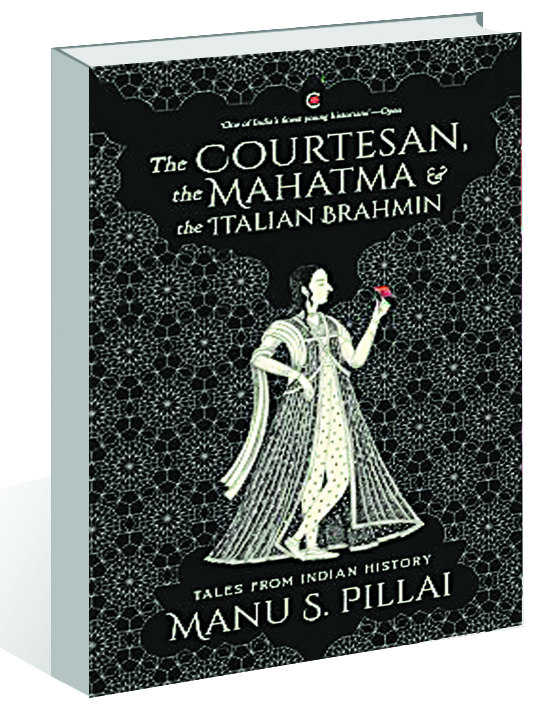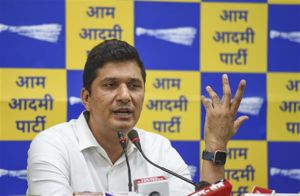
The Courtesan, The Mahatma and the Italian Brahmin: Tales From Indian History by Manu S. Pillai. Westland.
Ratna Raman
This book has around 60 stories interspersed with several evocative illustrations by Priya Kuriyan and is divided into three parts. Part one and two comprise, respectively, Stories Before the Raj and Stories from the Raj and carry evocative black and white illustrations. Part three is an afterword that closely follows the questions raised in the last narrative of the previous section; “What if the Mahatma had lived?” The projection of Mahatma Gandhi into a futurity where he could have lived to see 125 years and died in obscurity , while battling modernity and watching his philosophy and values fall into perpetual neglect, echoes patterns in the life and death of VO Chidambaram Pillai in The Champion of Tuticorin, among others. It also sits uneasily in the context of how violence and greed, the complete antithesis of Gandhian values, propel public life on a daily basis today.
Published propitiously in times that have most certainly been wrenched out of joint, Manu Pillai’s book is an important contribution. Wide ranging and informative, this book was inspired by his weekly newspaper column titled Medium Rare. Pillai’s anxiety that such wide-ranging retelling could make for a flawed format is misplaced, because although each narrative springs from quite different sources and is about real and imagined Indians in different times and places. The context is invariably that of an Indian past, ancient, medieval and modern. In recent years, the historian, the narrator of tales from the past, the keeper of records, each one of these figures in our public lives, has been pushed against the wall and subjected to all manner of ill treatment. Those who spoke out or offered dissent have been swiftly silenced while several non-speaking others have been subjected to sustained lynching. Meanwhile, names of places have been changed, institutions have been decimated, rights of ordinary citizens have been withheld, denied or stomped over, events and histories have been distorted, oversimplified and polarised in order to project a homogenised and simplistic understanding of our multi-layered past.
The only way to stem this untimely demise of polyphonic voices is to delve into our pasts and explore it in an untrammelled manner in order to arrive at a more stable understanding of India. Pillai’s well researched and peer-reviewed accounts offer us perspectives that are nuanced, not very well known and enable us to engage more actively into understanding how our heterogeneous past has shaped us.
Documenting events from Indian history, Pillai introduces us to several players on the public stage, complex and committed men and women and shows us the kaleidoscope of brilliant colours and combinations that India is composed of. Pillai’s canvas introduces us to philosophers and mystics such as Kabir and Basava and their anti- caste, egalitarian crusade that was carried on in a later period by Jyotirao and Savitribai Phule, Ambedkar and Periyar. Tracing the success of Kalidas’s Shakuntala in her new avatar in William Jones’ translation of the play for Western audiences, Pillai enables us to examine anew constructions of gender through the lives of Mudupalani, Akka Mahadevi , Khunza Humanyun and Razia Begum and Begum Samru. We also peek into the lives of Gauhar Jaan, Annie Besant, countless ammachies, Balamani, Savitri and Janaki Ammal, controlled and shaped by patriarchy.
A phalanx of Indian residents of diverse faiths from different walks of life people the second section. We run into Tipu Sultan and Shivaji, a gamut of English administrators: good, bad and indifferent, including Sir Arthur Cotton, whose avant-garde environment-friendly irrigation practices in Andhra Pradesh allow him to be revered to date. We glimpse lives of leaders who participated in India’s struggle for independence. Our attention is repeatedly drawn to the little known lives of men and women from South India.
The reason why lessons from history are never learnt is perhaps because history is seldom presented to us as palpable and living experience. Pillai rescues history from being a compendium of incontrovertible data by allowing us to engage with the strengths and frailties of the humans who lived through it.
This anecdotal book travels long distances to bring to our notice the urgent need to delve into our past to better understand and shape our present in order to rescue it from the dire straits that it is being steered towards. Pillai’s tracing of diverse and disparate narratives reiterate ancient India’s plurality. Heterogeneity in a world separated by caste, class and gender exists with all manner of warts and inequities. The solution to addressing this cannot be a clamping down upon diversity and difference in matters of faith, personal choices, freedom of expression, dissent and life. We need to uncover and delve into many, many more tales from India’s history to make India great. As of now, this is an uphill task.



























